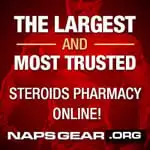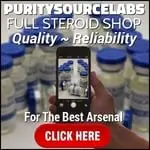drveejay11 said:
I would appreciate some literature on this.  .
.
This is from a post here awhile back. don't know who original poster was (can prob find the thread), i saved it in a txt file:
+++++++++++++
...A few pages later in this same issue of JAMA, a startling new finding showed that garlic prevents arterial occlusion by the same mechanism as HDL-cholesterol.2,3,4 Previous studies demonstrated that garlic protects against arteriosclerosis, but it was not clear how it does so 5-11
One way arterial occlusion occurs is when LDL-cholesterol binds with molecules secreted from the inner lining of the artery, forming tiny plaques that can accumulate and harden. HDL-cholesterol inhibits this process by absorbing excess plaque-forming molecules.12,13
According to the JAMA report, garlic extract works the same way as HDL cholesterol, but more potently. The researchers who conducted the study stated that, in concentrations relative to man, "garlic extract was 2.5 times more effective in inhibiting plaque formation than was HDL-cholesterol."
What the JAMA authors did not discuss was the positive impact that high-HDL confers on longevity. A common trait of people living to age 100 is high levels of HDL-cholesterol in their blood.14 It is not easy, however, to significantly elevate HDL levels. Even with the proper drugs and supplements, it is extremely difficult to raise HDL more than 27%. In some people, it is hard to get HDL levels to nudge upward at all. The fact that garlic extract was shown to be 2.5 times more effective in inhibiting arterial plaque formation than HDL represents a potential breakthrough in the prevention of the most common disease afflicting civilized man, i.e. plugged-up arteries.
The JAMA editors cautioned against supplementing with garlic because the potencies of active constituents vary so greatly between brands. Life Extension does not agree with this position based upon the fact that standardized aged-garlic extract under the Kyolic brand name is readily available to consumers. Previous studies confirm the protective effect of Kyolic garlic extract on the arterial wall.5,8
The best news is that the Kyolic company has finally come out with a high-potency caplet that enables most people to swallow just one a day to obtain 1000 mg of standardized aged garlic extract. For more than a decade, Life Extension had asked the makers of Kyolic for a high-potency supplement so that users would not have to swallow so many capsules. Based on the research reports we have reviewed, it would appear that one 1000 mg Kyolic caplet should be taken for every 1.1 pounds of food eaten a day...
For longer life,
William Faloon
--------------------------------------------------------------------------------
References
1. JAMA, September 18, 2002, 288(11):1342.
2. Garlic Prevents Plaque, JAMA, September 18, 2002, 285(11): 1342.
3. Siegel, et. al., Effect of Garlic on Arteriosclerosis, presentation at NIH workshop on herbs and heart disease, August 2002.
4. Siegel, G., A Primary Lesion Model for Arteriosclerosis Microplaque Formation, Int. J. Angiol, 2000, 9: 129-134.
5. Efendy et.al., The Effect of the Aged Garlic Extract, 'Kyolic', on the Development of Experimental Atheriosclerosis, Atherosclerosis, 1997, 132: 37-42.
6. Fogarty, M., Garlic's Potential Role in Reducing Heart Disease, BJCP, March/April 1993, 47(2): 64-65.
7. Campbell, JH et. al., Molecular Basis By Which Garlic Suppresses Atherosclerosis, J. of Nutrition, March 2001 Suppl, 131(3S): 1006S-1009S.
8. Borek, Antioxidant Health Effects of Aged Garlic Extract, J. of Nutrition, March 2001 Suppl., 131(3S): 1010S-1015S.
9. Lau, Benj., Suppression of LDL Oxidation by Garlic, J. of Nutrition, March 2001 Suppl., 131(3S): 985S-988S.
10. Slowing et. al., Study of Garlic Extracts and Fractions on Cholesterol-Fed Rats, J. of Nutrition, March 2001 Suppl., 131(3S): 994S-999S.
11. Ho et. al., S-Allyl Cysteine Reduces Oxidant Level in Cells Involved in the Atherogenic Process, Phytomedicine, 2001, 8(1): 39-46.
12. Harrison's Principles of Internal Medicine, 15th ed., 2001, The Pathogenesis of Atherosclerosis, 1377-1382.
13. Stein, et. al., Internal Medicine, 1988, 1889.
++++++++++++


 Please Scroll Down to See Forums Below
Please Scroll Down to See Forums Below 












